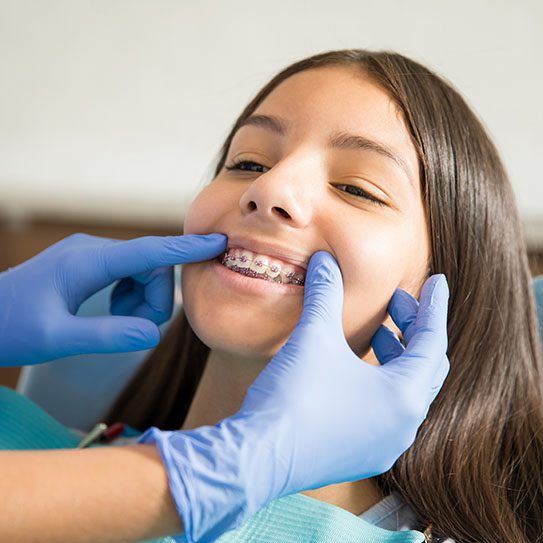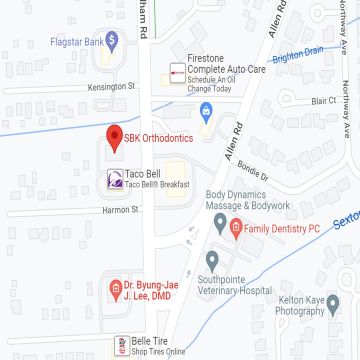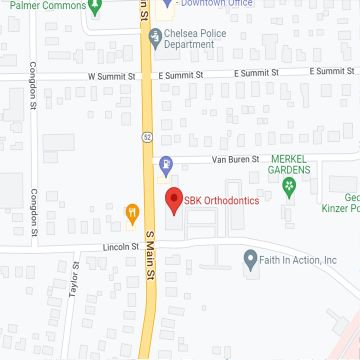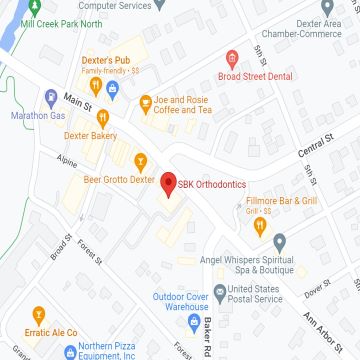Orthodontics Explained: How Braces Move Teeth


Discover the Science Behind Your Smile Shift
When you think of braces, you probably picture metal brackets and wires straightening crooked teeth, but have you ever wondered how they actually work? Understanding how orthodontics moves your teeth can help you feel more informed, confident, and committed during your treatment. Whether you’re already wearing braces or considering them, learning the science behind the process makes it easier to appreciate the gradual transformation happening in your mouth.
At SBK Orthodontics, we believe in educating our patients about their orthodontic care. If you’ve ever searched for an “orthodontist near me” or asked yourself how braces really work, you’re in the right place. Here’s a closer look at how braces do more than just improve your smile; they improve your overall oral health.
The Basics of Orthodontics
Orthodontics is the dental specialty focused on diagnosing, preventing, and correcting misaligned teeth and jaws. One of the most common tools used in orthodontics is braces, which apply continuous, gentle pressure on the teeth over time. This pressure causes the teeth to gradually shift into a new position, guided by the orthodontist’s carefully crafted treatment plan.
If you’re seeing an orthodontist in Saline for your braces, you’re benefiting from a proven and predictable method that has helped millions of patients achieve healthier, straighter smiles. But what’s really happening beneath the surface?
The Anatomy Behind Tooth Movement
To understand how braces move teeth, it helps to understand what holds teeth in place. Each tooth is anchored into the jawbone by a periodontal ligament, a group of fibers that allows slight movement and flexibility. Surrounding this ligament is alveolar bone, which reshapes itself in response to pressure from braces.
When braces apply pressure to a tooth, the periodontal ligament compresses on one side and stretches on the other. This triggers a biological response where bone cells called osteoclasts break down bone tissue on the pressure side, while osteoblasts rebuild it on the tension side. This process, called bone remodeling, is what allows your teeth to move through the jaw.
How Braces Apply Pressure
Braces work using a system of brackets, wires, and elastic bands that apply carefully controlled forces to specific teeth. Here’s a breakdown of each component:
- Brackets are bonded to the front of each tooth and serve as anchors for the wires.
- Archwires run through the brackets and provide the force that moves teeth.
- Ligatures or elastics secure the wires in place or help adjust the bite.
Your orthodontist in Saline adjusts your braces at regular intervals to change the direction or intensity of pressure, continuing the movement process until the teeth are in their desired positions.
How Long Does It Take?
Orthodontic treatment timelines vary from person to person depending on the complexity of the case, the type of braces used, and how well the patient follows care instructions. Most patients wear braces for about 18 to 24 months, though some may need less or more time.
If you’re just beginning your journey and wondering how long it will take, a consultation with an orthodontist near me is a great place to start. Your orthodontist will assess your teeth and bite, take X-rays, and create a personalized treatment plan based on your goals and needs.
Pain and Pressure: What to Expect
Many patients associate braces with soreness — and that’s understandable. When your braces are adjusted, it’s normal to experience mild discomfort for a few days. This is a sign that your teeth are responding to the new pressure and that the bone remodeling process is underway.
Over-the-counter pain relievers, soft foods, and orthodontic wax can help ease any temporary soreness. Your orthodontist will also give you tips on how to manage discomfort and keep your mouth healthy throughout the process.
Braces vs. Clear Aligners
Braces aren’t the only way to move teeth. Clear aligners, such as Invisalign, offer a removable and discreet option for mild to moderate orthodontic issues. Instead of wires and brackets, clear aligners use custom-fitted plastic trays that shift your teeth in small stages.
While both systems rely on consistent pressure to guide tooth movement, aligners are typically best suited for patients who are diligent about wearing them 20–22 hours a day. An orthodontist near me can help you decide whether clear aligners or braces are the right choice for your smile.
Choose SBK Orthodontics for Your Smile Journey
Our team at SBK Orthodontics is here to guide you through every step of your braces experience. If you’re searching for an orthodontist near me who takes the time to explain treatment, customize your plan, and deliver outstanding results, we’re just around the corner in Saline.








